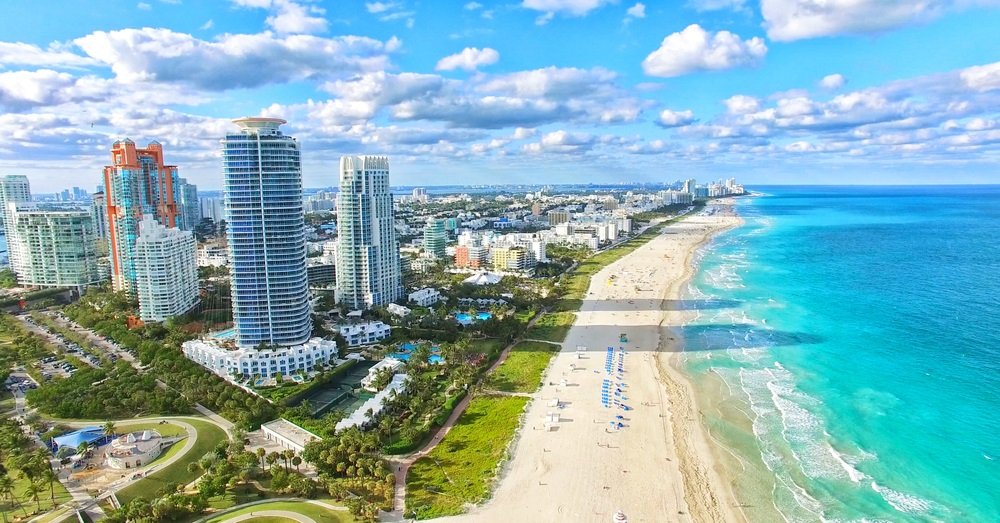Fastest Growing Cities in the US.
The United States is experiencing significant demographic and economic shifts, with certain cities growing at unprecedented rates. As more people flock to these urban centers for better opportunities, vibrant communities, and a higher quality of life, understanding the factors driving this growth is essential. This article will explore some of the fastest growing cities in the US., delving into what makes them attractive to new residents and businesses alike.
Table of Contents
Factors Behind City Growth
Before diving into specific cities, it’s important to understand why some areas are growing more rapidly than others. Several key factors contribute to the rapid expansion of urban populations:
- Job opportunities: Cities with strong economies and diverse industries naturally attract more people seeking employment. Technology, healthcare, finance, and manufacturing are common industries driving growth.
- Quality of life: Many people move for a better lifestyle, which includes access to affordable housing, recreational opportunities, education, and safety.
- Cost of living: Affordable housing, lower taxes, and general living expenses often encourage people to relocate to cities where they can stretch their dollars further.
- Climate and geography: Warm climates and attractive geographic locations (such as proximity to beaches, mountains, or nature) often play a role in drawing people to a new area.
- Infrastructure and amenities: The availability of modern infrastructure, good public transportation, healthcare facilities, schools, and entertainment venues can make cities more attractive.
Let’s take a closer look at some of the fastest-growing cities in the U.S., based on recent population data, job market trends, and general livability.
1. Austin, Texas
Rapid Growth Driven by Technology and Culture
Austin has consistently ranked among the fastest-growing cities in the U.S. for the past decade. With a population growth rate of over 2.5% annually, the capital of Texas has become a hub for technology, education, and culture.
- Tech industry: Often referred to as “Silicon Hills,” Austin is home to major tech companies such as Apple, Google, Dell, and Tesla, driving job growth and economic expansion.
- Cultural attractions: Known for its live music scene, arts festivals, and cultural diversity, Austin offers a vibrant lifestyle that attracts younger professionals and families.
- Education and innovation: The presence of the University of Texas at Austin fuels innovation and provides a steady stream of educated talent to the city’s workforce.
Moreover, Austin’s relatively low cost of living compared to other tech hubs like San Francisco or New York has contributed to its appeal.
Challenges
The rapid growth has led to rising housing costs, increasing traffic congestion, and concerns over maintaining the city’s unique cultural identity. However, city planners are working to manage these challenges through urban development projects and expansion of public transportation.
2. Phoenix, Arizona
Expanding Desert Metropolis
Phoenix has seen exponential growth, largely due to its affordable housing market and a booming job sector. The city grew by over 11.2% from 2010 to 2020, making it one of the largest and fastest-growing cities in the country.
- Real estate affordability: The relatively low cost of housing in Phoenix has made it attractive to those fleeing more expensive coastal cities.
- Diverse economy: The local economy is thriving, with job opportunities in sectors such as healthcare, manufacturing, finance, and technology. Major employers include Intel, Honeywell, and Banner Health.
- Sunshine and climate: With over 300 days of sunshine a year, Phoenix offers an attractive lifestyle for those who enjoy warm weather and outdoor activities, such as hiking and golfing.
Challenges
The city faces significant challenges with water scarcity and extreme summer heat. Phoenix is investing in infrastructure to handle drought conditions and maintain long-term sustainability, but these environmental factors remain an ongoing concern.
3. Nashville, Tennessee
Music and Healthcare at the Heart of Growth
Nashville is experiencing rapid growth, largely driven by its music scene, healthcare sector, and rising job market. The city’s population has grown by 20% in the last decade, and projections suggest continued growth in the coming years.
- Music industry: Known as “Music City,” Nashville is a cultural hub for country music, live performances, and recording studios, drawing artists and professionals from around the world.
- Healthcare sector: Nashville boasts one of the largest healthcare industries in the U.S., with companies like HCA Healthcare and Vanderbilt University Medical Center contributing to job growth.
- Tourism: The city’s thriving tourism sector also plays a significant role, with millions of visitors each year contributing to the local economy.
Nashville’s low cost of living, relative to cities on the East and West coasts, makes it attractive for families and professionals seeking a vibrant yet affordable lifestyle.
Challenges
As Nashville grows, housing affordability has become an issue, with prices rising by nearly 30% over the last five years. Traffic congestion and a strained public transportation system are also challenges the city must address.
4. Boise, Idaho
A Small City with Big Growth
Boise, Idaho, may not have the size of cities like Phoenix or Austin, but its growth rate is nothing short of remarkable. From 2010 to 2020, Boise’s population increased by over 9.7%, making it one of the fastest-growing small cities in the U.S.
- Outdoor lifestyle: Known for its access to outdoor activities like hiking, skiing, and fishing, Boise is a draw for those who appreciate nature and recreation.
- Low cost of living: Boise’s affordable real estate and low cost of living have attracted families and retirees looking for a more relaxed pace of life.
- Tech and agriculture: Boise’s economy is diversified, with growing tech companies, a robust agriculture industry, and the presence of firms like Micron Technology providing high-paying jobs.
Challenges
Boise’s rapid growth has led to concerns over urban sprawl, housing shortages, and rising property prices. Like other fast-growing cities, maintaining infrastructure and affordability will be crucial in the years ahead.
5. Raleigh, North Carolina
A Thriving Tech and Education Hub
Raleigh, part of the Research Triangle (which includes Durham and Chapel Hill), has emerged as one of the fastest-growing cities in the U.S. due to its strong education system, tech sector, and quality of life.
- Research Triangle Park: One of the largest research parks in the world, the Research Triangle is home to major employers like IBM, Cisco, and GlaxoSmithKline. The park contributes significantly to the local economy and job market.
- Education and innovation: Raleigh is home to prestigious institutions such as North Carolina State University and nearby Duke University, which provide a steady flow of talented graduates.
- Quality of life: Raleigh offers an attractive blend of urban and suburban living, with affordable housing, excellent schools, and a strong sense of community.
Challenges
As Raleigh continues to grow, the city faces traffic congestion, rising housing prices, and challenges with infrastructure expansion. Maintaining its high quality of life while accommodating new residents will be key to the city’s continued success.
6. Charlotte, North Carolina
A Financial Powerhouse
Charlotte has been growing rapidly due to its status as a financial center, with major banks and corporations headquartered there. The population grew by over 19.5% between 2010 and 2020.
- Banking sector: Charlotte is the second-largest banking hub in the U.S., after New York City, and is home to Bank of America and the East Coast operations of Wells Fargo.
- Diverse economy: Beyond banking, Charlotte’s economy is supported by industries such as healthcare, technology, and energy.
- Sports and entertainment: The city offers vibrant sports culture, with teams like the Carolina Panthers (NFL) and the Charlotte Hornets (NBA), alongside thriving arts and music scenes.
Challenges
Charlotte faces rising housing costs and traffic congestion, as well as challenges with maintaining affordable housing for its growing population. However, its strong economy and job market continue to attract new residents.
Conclusion: Fastest Growing Cities in the US
The U.S. is home to a number of fast-growing cities, each driven by unique factors such as job opportunities, affordable housing, climate, and quality of life. Cities like Austin, Phoenix, and Nashville are thriving due to a mix of tech, cultural attractions, and economic diversity. Meanwhile, smaller cities like Boise and Raleigh are growing rapidly as well, offering excellent quality of life and expanding job markets.
However, rapid growth also comes with challenges. Rising housing costs, traffic congestion, and strains on infrastructure are common issues that these cities must address to maintain their momentum. By balancing growth with sustainability, these cities have the potential to thrive in the long term, continuing to attract new residents and businesses.
In summary, the fastest-growing cities in the U.S. offer valuable insights into where the future of urban development may lead, as people seek better opportunities, affordable living, and vibrant communities.
Read more new blog at KTVO News



